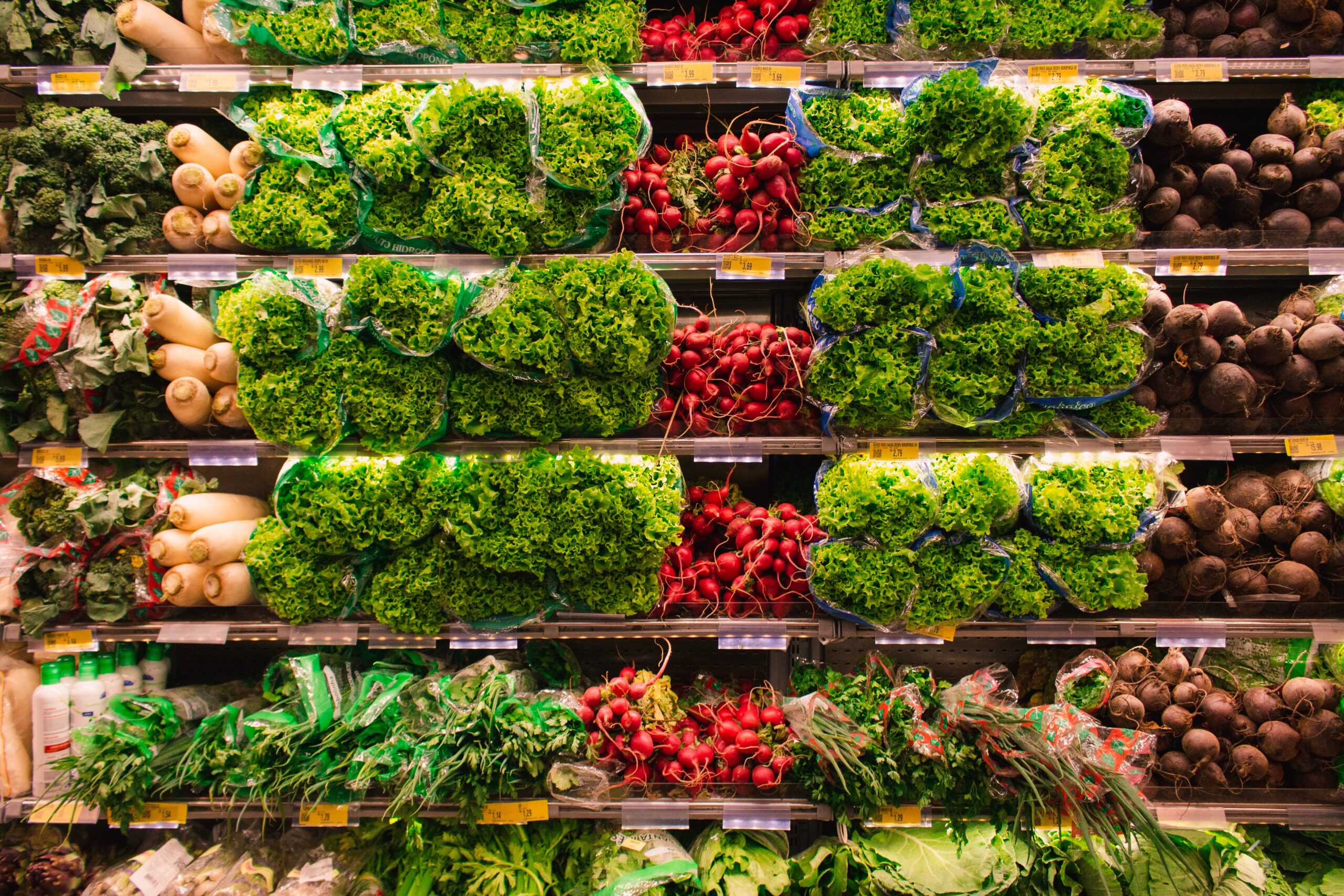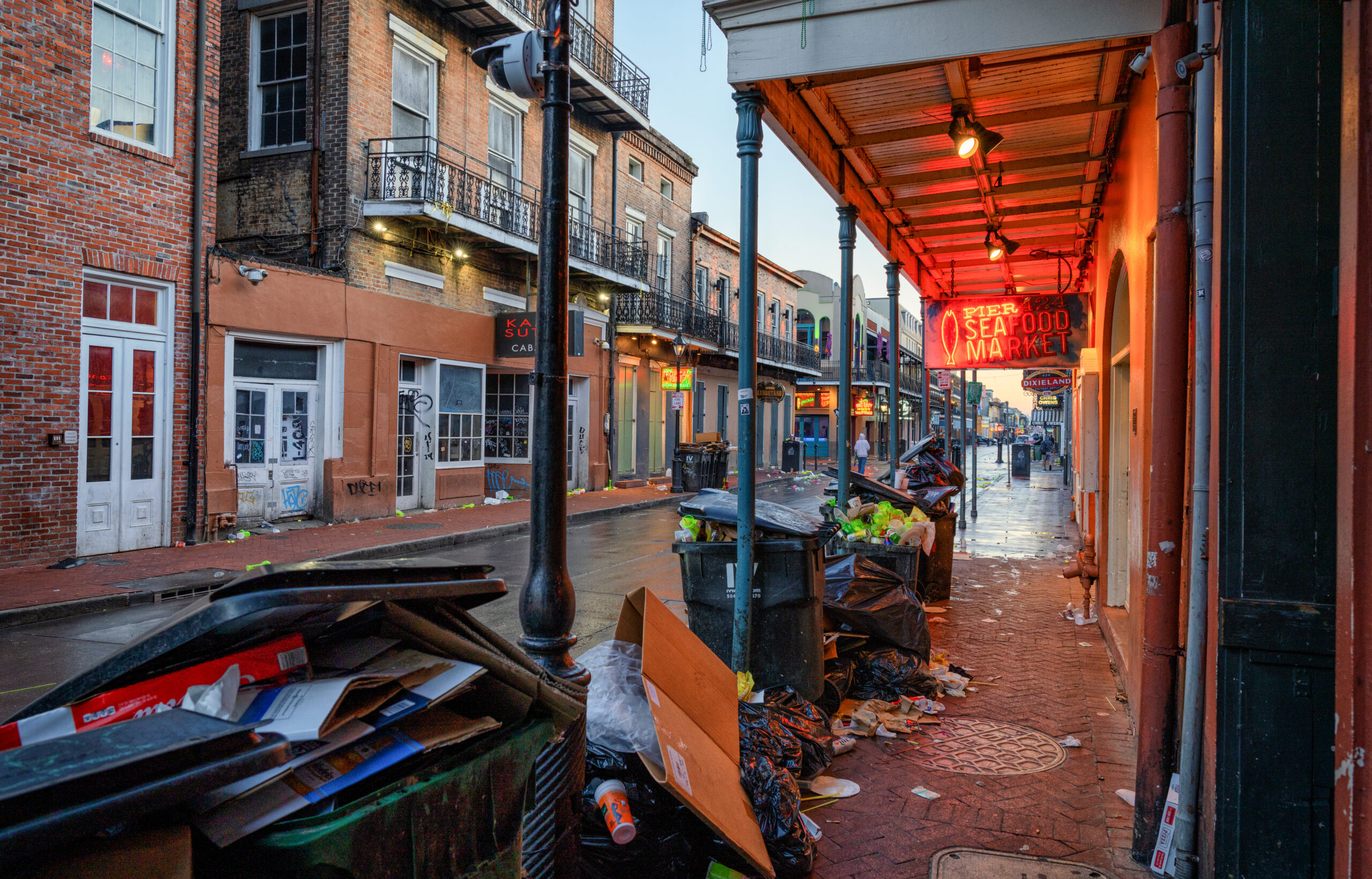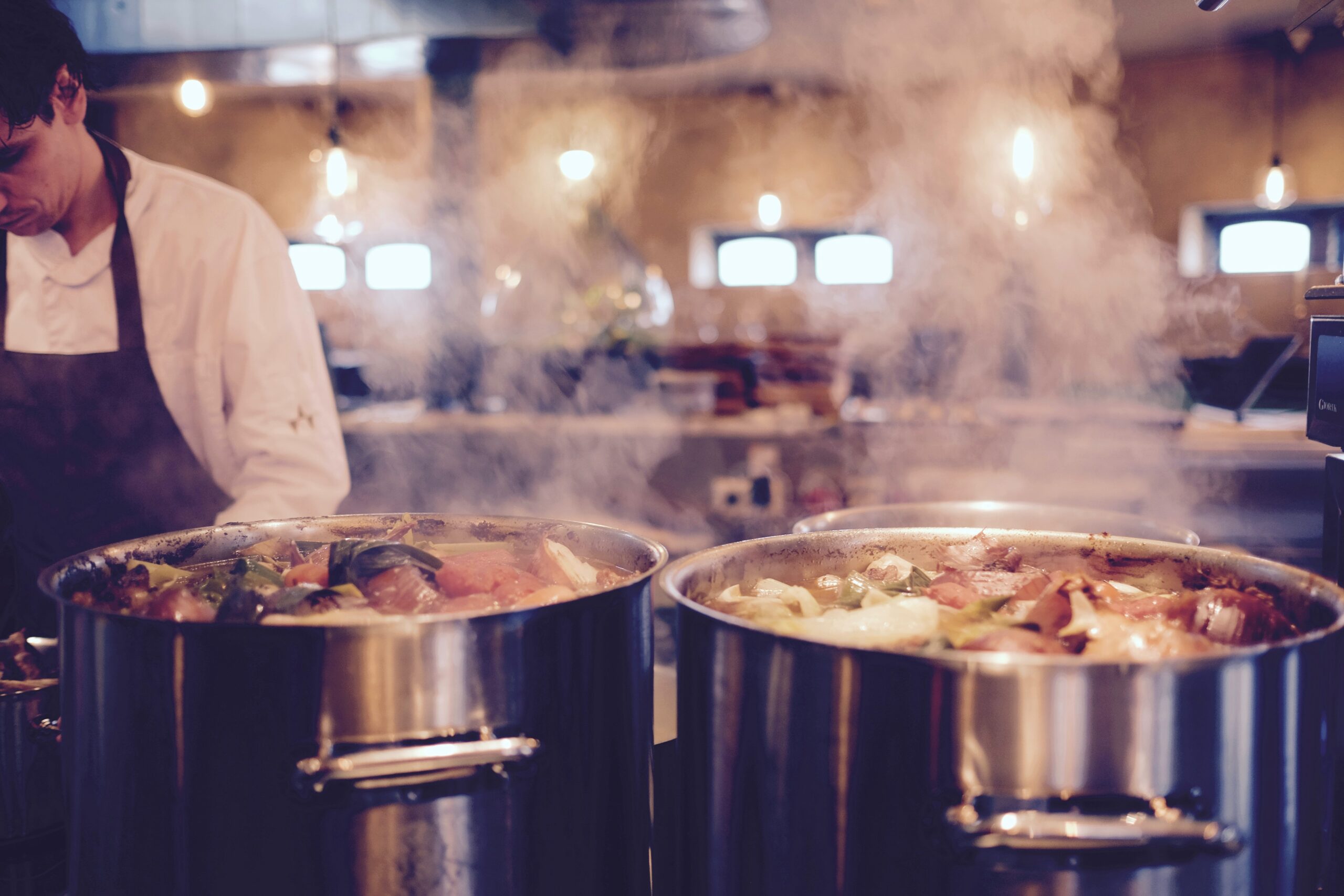PART ONE: The Problem
“We have a whole load of new, organic lettuce; we have spinach that is perfectly fine, nothing wrong with it. We have plenty of produce here to make a perfectly good salad,” is what Cesar Zuniga, the Operations Manager for the Salinas Valley Solid Waste Authority, told PBS Newshour in a special on food waste in the United States.
70% of our country’s leafy greens are grown just in the Salinas Valley in California. Every day Zuniga witnesses garbage trucks come in from the Salinas farms filled with edible produce.
In the United States, Thirty to forty percent of our food supply becomes food waste. According to FoodPrint, there are two different levels of food waste. First, there’s “food loss,” which is the amount of food, post-harvest, available for human consumption but not consumed for any reason. These reasons could be that the food was left in fields on farms, unprocessed in manufacturing facilities, and lost or spoiled in transportation. The second type is food waste, which is technically a smaller category of food loss that has to do with “food discarded by retailers due to color or appearance and palace waste by consumers” (USDA).
Food waste begins at farms and other agricultural spaces. The market conditions in grocery stores determine how much is harvested on farms. What tends to happen is farmers will practice “dumping,” where they produce more of a product that people are willing to buy or when demand for a product falls unexpectedly. Farmers are forced to do this because they do not want to pay for transportation and labor if the market price for their products is lower. For example, an article published in Southwest FarmPress discussed how expensive transporting food is and the significant increase in the cost of trucking food within the past few years. In January, it costs a truck $8,450 to transport a truckload of refrigerated foods from Washington State to New York. Two weeks later, the same truck driver driving the same route paid $10,000. Because of the high transportation costs, it’s not cost-effective for farmers to harvest their products when there are low market prices. Because of this, many farmers will leave unharvested crops in their fields. Farmers are at the will of these large corporations and their individualized market mentality.
Grocery stores work on a profit margin as low as 1-3%. The best way to make money is by selling large quantities of items. By keeping products, like produce, at a lower market price, they meet their profit margin goals. Another issue with the market is that consumers are conditioned to buy foods pleasing to the eye. Joe Watson, the former director of Produce at Rouses Market, explained in an interview with Consumer Reports that although USDA sets specific standards for produce quality, retailers have set another level of criteria for their products. In the same way that “sex sells,” retailers choose the best-looking produce to sell, so “consumers have been conditioned, to an extent.” This manipulation results in “ugly” food being thrown away.

Grocery stores put out food, especially produce, that is pleasing to the consumer’s eye (Photo by: Pexels).
Food waste is not only created by farmers and retailers, but it also comes from consumers. Restaurants waste approximately 4 to 10 percent of food before reaching the consumer’s plate. According to a Food Waste Reduction Alliance report, a half-pound of food waste is created from every meal served in a restaurant, including waste made by the kitchen and leftover waste by the customer. Not only is food waste a moral problem, but it also has significant economic and environmental impacts. A study done by Futurity showed that divided among 128.6 million households in the U.S., food wastes cost $1,866 per household annually. Food waste also costs the United States a pretty penny, costing an unnecessary two-hundred and eighteen billion dollars per year. As food waste decomposes in landfills, it releases methane, a greenhouse gas that is twenty-seven times more potent than carbon dioxide. Yet, in 2015, the Department of Agriculture and Environmental Protection Agency finally announced the first-ever domestic goal to address food waste. In a country where 13.8 million people are food insecure, there should be no reason why good-quality food is thrown in the trash. If the United States could reduce its food waste by just 15 percent, the country could feed 25 million people annually.
In 2019, the annual food waste produced by the food service industry in Louisiana alone was 160,000 tons, most of which went straight into landfills. This number is staggering, considering that 15.8% of households in Louisiana experience food insecurity, which is higher than the national rate of 10.5%. In New Orleans, restaurants play a massive role in tourism, contributing to the $10 billion of the revenue made by the Hospitality industry. With a booming restaurant industry, there’s a ton of food waste the city has to deal with. Food waste in the city, especially in the French Quarter, has created a significant rodent problem. Rodents typically get their food from the restaurant’s food waste from trash cans in the alleyways. But in 2020, when most restaurants were not doing indoor dining and solely doing takeout, the increase in rodents shed light on New Orleans’s food waste problem. A French Quarter Livestream tour shot by Charles Marsala went viral because the video showed over a dozen rats running around the streets while people were around. Because there was not much food waste for the rats to rely on, they were forced to find food in the open streets.

A picture of Bourbon Street, where the streets hold trash and food waste (Photo by: Public Domain).
There is an apparent disparity between food consumption in New Orleans and food insecurity, considering that 1 in 5 people in New Orleans is food insecure. Even before the pandemic, New Orleans was ranked second highest for senior food insecurity in all U.S. metropolitan areas. The pandemic not only increased the number of people dealing with food insecurity, but it put many people in the restaurant industry out of work. According to the Louisiana Workforce Commission, there were 97,000 hospitality and leisure jobs. The amount of jobs has decreased significantly, considering there were only 66,100 hospitality and leisure jobs in 2021. Although non-profit organizations in New Orleans, like Second Harvest Bank and Compost Now, have different methods of repurposing food waste, their organizations focus on aspects of the food waste problem rather than looking at it from a holistic perspective. New Orleans needs a solution that will not just solve food waste but also work towards solving other issues like food insecurity and employment.
PART TWO: The Solution
“DC Central Kitchen is based on a very simple premise. That waste is wrong. That type of waste could be food, unused, kitchens, and even productive minds” is what the Chief Executive officer of DC Central Kitchen told the U.S. Chamber of Commerce Foundation in an interview. Located on 2nd Street Northwest in Washington DC, DC Central Kitchen is a non-profit and social enterprise that has been combating food waste, hunger, and unemployment since 1989.
The concept of “food waste” wasn’t prevalent until the 1970s, when the consumer market changed and desired “value-sizing,” which meant getting more food for your dollar. This change in marketing and consumption led to a significant increase in food waste in the 1980s. Hunger was also not addressed in the U.S. until the late 60s. Although there were a few federal food assistance programs at the time, the food insecurity problem in the U.S. wasn’t understood to the full extent by Americans until 1968, when CBS televised a documentary, “Hunger in America,” that displayed extreme poverty and malnutrition in San Antonio, Texas. Even with the exposure to hunger in America, by 1980, there were still only two dozen food banks in the entire country.
In 1984, Ronald Reagan created a “Task Force on Food Assistance” to address hunger claims in the U.S. The task force concluded that there was no widespread “undernutrition” to be considered a major concern. But this task force created two kinds of definitions of hunger so that they only had to consider the more scientific, clinical definition where a physician would have to diagnose a person. This misconstrued people’s perceptions of the hunger problem and limited the funding for federal food assistance programs. Not only was there a significant food insecurity issue during this time but there were also high unemployment rates due to the unsteady economy in the 80s.
In 1982, Reagan created the Job Training Partnership Act (JTPA), which prepared youth for entry into the labor force and provided job training to individuals facing severe barriers to employment. Although this program seemed ideal, the program was a failure under Reagan. According to a study done in 1993, men who participated in the program had 10% lower earnings than a control group who never participated in the program. Besides the Hunger Relief Act of 1988, there was little expansion in the food assistance program. Due to the lack of support from the federal government, there was a significant influx in food banks and other non-profit organizations.
During the late 80s, 48% of the nation’s private food pantries in America’s Second Harvest network were established (Norwood). There were a few non-profit organizations that were establishing themselves during this time. But many of these organizations were focused solely on providing food to community members. In 1989 a man named Robert Egger, a nightclub manager at the time, was frustrated at the government’s lack of quality assistance and how other non-profit organizations were responding to food insecurity and unemployment. Egger decided to create an organization that had a holistic approach that freed people from many aspects of poverty like food insecurity and unemployment. Egger was also bothered by the food waste problem, so he used the food waste to establish D.C. Central Kitchen.
DC Central Kitchen wouldn’t be what they are today without its successful culinary job training program. The job training program is for adults overcoming homelessness, incarceration, addiction, trauma, and other barriers that make it difficult to find work. They call it the “Second Chance Cycle.” The people given a second chance are preparing food that was also given a second chance. This program is a fourteen-week program that is free to students. They are provided with weekly transportation stipends so that students can attend classes. They receive a comprehensive culinary arts education, including knife skills, culinary theory, allergen food sensitivity awareness, and food sanitation. They will also receive a ServSafe food handler’s certification, which is nationally recognized and more food service employers require. In addition, they provide career readiness training and financial-asset training, which cover budgeting, saving, and other things to help with financial goals. After nine weeks of training, they are paired with a mentoring chef from restaurants, hotels, corporate cafeterias, fast-casual spots, hospitals, schools, and universities. For three weeks, they receive real-world experience and the ability to build professional networks. Even after students graduate from the program, they still receive support through career training and other social services (DC Central Kitchen Enroll).

DC Central Kitchen provides thousands of healthy school lunches to kids all over Washington D.C. (Photo by: Wiki Media Commons).
Since the organization’s beginning, they have prevented more than 34 million pounds of food waste. They recover food from hundreds of donors, including local farmers and wholesalers. Last year, they saved more than 540,000 pounds of food, which allowed them to prepare 5.6 million meals for schools, shelters, and other non-profits. In addition, the organization has given students more access to healthy food options. On average, they prepare 5,000 meals a day. Not only are they preparing meals for different organizations, but they are creating programs to help with food deserts all over the city. They have also established a “Healthy Corners” program, which helps alleviate food deserts in DC neighborhoods by providing fresh produce in corner stores for a discounted price. Just last year, over 12,000 customers purchased fresh fruits and vegetables through their Healthy Corners program (DC Central Kitchen Impact and Financials).
Although DC Central Kitchen has a fantastic program that brings people out of poverty while simultaneously eliminating food waste, this organization also has its limitations. A considerable percentage of food waste comes from restaurants and household consumers. But DC Central Kitchen sources its food from local farms and wholesalers. So although they are repurposing food that creates thousands of meals a day, their organization has limited its reach regarding the type of food waste they are willing to take in.
PART THREE: Solution in New Orleans
The disparities between food waste, food insecurity, and unemployment rates can be significantly reduced if New Orleans implemented a program structured like DC Central Kitchen. DC Central Kitchen mainly works with farmers and grocery retailers. Rouses’s Market, which has five locations just in New Orleans, is already combating food waste inside and outside of its organization. In the first two weeks of the pandemic, there was a surplus of produce for wholesalers like Capitol City Produce and Gulf Coast. With the immediate shutdown of restaurants, schools, and cruise ships, these produce wholesalers had a surplus. Even though these wholesalers generally do not supply Rouses, Rouses decided to take in the excess produce to minimize food waste. Rouses will also reach out to their prominent vendors, like Tyson Foods and Smithfield Foods, to see if they have any food that they can distribute to food banks. In mid-April 2020, Tyson Foods donated 80,000 pounds of fresh chicken to Rouses to allocate among food banks across the Gulf South. A small fraction of that donation could be made into thousands of meals for people in New Orleans. Because Rouses is aware of food waste, they would be a great supplier to donate food to a DC Central Kitchen in New Orleans.
DC Central Kitchen has a holistic approach to solving not just food waste but combating food insecurity and unemployment. Implementing this program will help combat food insecurity in children in New Orleans. In just 2020 alone, 1 in 3 children in New Orleans experience food insecurity. Only 1 in 5 New Orleanians reports eating five or more servings of fresh fruit or vegetables daily. The DC Central Kitchen provides lunches to 3,600 at 18 different schools all over DC. In 2015, they were awarded the Golden Carrot Award from the Physicians Committee for Responsible Medicine, which awards organizations for exceptional work to improve the healthiness of school lunches. The number of schools in Orleans Parish is less than the number of schools DCCK is currently feeding, making this program feasible in this community. Once the program is implemented in Orleans Parish, the program can expand to other parishes.
59% of Orleans Parish is Black, and a study done in 2009 showed that Black people in New Orleans were 71% less likely to have access to more than one supermarket in their neighborhood than residents of other communities (Propeller). Implementing the Healthy Corners program created by DCCK in New Orleans convenience stores would provide fresh, affordable food to neighborhoods that do not have easy access to grocery stores.

A job training program structured like DC Central Kitchen would not only combat food insecurity, but it would give people the culinary skills to work in the New Orleans hospitality industry (Photo by: Pexels).
In Louisiana, the unemployment rate in March of 2022 was 4.2%. Although the unemployment rate has decreased as we are slowly transitioning out of the pandemic, this percentage is still higher than the national average for March of 2022, which was 3.6%. Restaurants in New Orleans are currently dealing with labor shortages due to the aftermath of the pandemic.
Because New Orleans is known for its restaurant industry and tourism, there should be a culinary training program for unemployed people who want to work in the food service industry. Not only does it provide opportunities for unemployed people, but it also creates a new pool of applicants that restaurants and other businesses can pool from to resolve their labor shortages. In addition, this program would create an influx of service workers, production cooks, utility workers, and facilities managers who are already trained in the foodservice. This alleviates the stress of businesses having to train new employees if they are recruiting from the job training program.
Many nonprofits are helping to solve the issue of food waste in this city. But DC Central Kitchen’s awareness of how food waste connects to other problems makes it the best way for people to get out of poverty. Using food waste to solve these interconnected problems is the best and most efficient way to reduce the widespread food insecurity and unemployment in New Orleans.
Resources:
Norwood, Janet L, and Gooloo S Wunderlich, editors. “ History of the Development of Food Insecurity and Hunger Measures National Academies of Sciences, Engineering, and Medicine. 2006. Food Insecurity and Hunger in the United States: An Assessment of the Measure. Washington, DC: The National Academies Press. Https://Doi.org/10.17226/11578.” Food Insecurity and Hunger in the United States: An Assessment of the Measure National Academies of Sciences, Engineering, and Medicine. 2006. Food Insecurity and Hunger in the United States: An Assessment of the Measure. Washington, DC: The National Academies Press. Https://Doi.org/10.17226/11578., National Academic Press, 2006, pp. 23–25.
“DC Central Kitchen Impact & Financials.” DC Central Kitchen, https://dccentralkitchen.org/impact/.
“DC Central Kitchen Enroll.” DC Central Kitchen, https://dccentralkitchen.org/enroll/.
“USDA and EPA Join with Private Sector, Charitable Organizations to Set Nation’s First Food Waste Reduction Goals.” USDA, https://www.usda.gov/media/press-releases/2015/09/16/usda-and-epa-join-private-sector-charitable-organizations-set.
 NOLAbeings
Multimedia artist Claire Bangser created NOLAbeings as a portrait-based story project that marries...
NOLAbeings
Multimedia artist Claire Bangser created NOLAbeings as a portrait-based story project that marries...
 Data corner: Adobe Suite (create a PDF, social media graphic, presentation, edit a photo and video
Data corner is where you go to work with analytics and top tech skills. It takes on everything from PERL and SQL to Canva and Sprout Social.
Data corner: Adobe Suite (create a PDF, social media graphic, presentation, edit a photo and video
Data corner is where you go to work with analytics and top tech skills. It takes on everything from PERL and SQL to Canva and Sprout Social.

Thanks for spotlighting our work, Maddie! We’ve always believed that sharing best practices & solutions will move all of us forward, and have enjoyed collaborating with a number of NOLA nonprofits over the years. We invite everyone to come visit us at our new facility in SW DC the next time you’re visiting the nation’s capital!